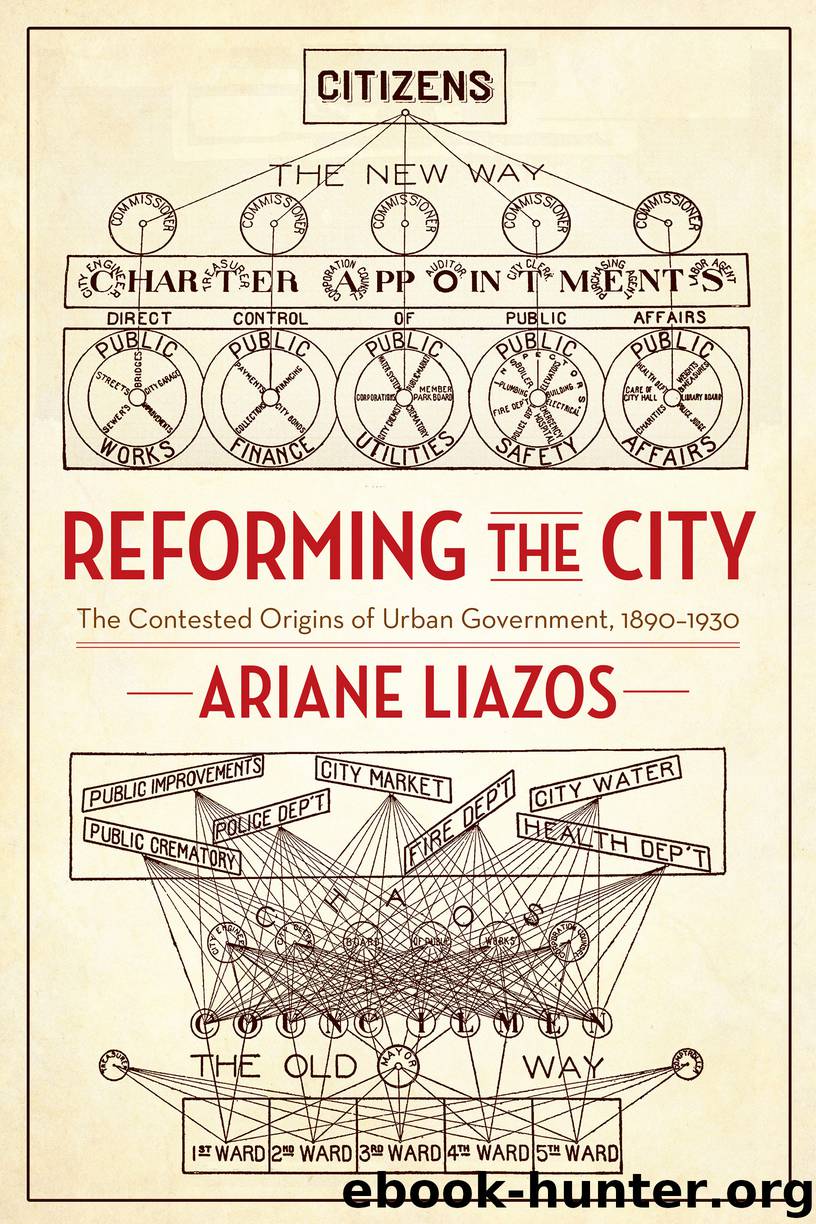Reforming the City by Ariane Liazos

Author:Ariane Liazos
Language: eng
Format: epub
Publisher: Columbia University Press
City Managers as “Expert Servants”: The “Commission Manager Plan” and the New Municipal Program, 1912–1919
Richard Childs, perhaps more than any other individual, drove the early movement for what was first called the commission manager plan. His initial prominence as a reformer stemmed from his leadership in the Short Ballot movement. Childs, an advertising executive and businessman from New York, graduated from Yale in 1904 and quickly became involved in reform. Though he cited James Bryce’s The American Commonwealth and Lincoln Steffens’s The Shame of the Cities as his inspirations, he was also influenced by political scientists.9 Frank Goodnow, among others, had long argued for a shorter ballot. The “elective principle,” Goodnow wrote in 1897, had been overused and misapplied to positions that required “skill” rather than “representation.”10
For Childs, this issue became something of a crusade. When he first voted, he was dismayed that he knew nothing about most of the candidates. He initiated a campaign through the press and prominent civic associations to call attention to the need to shorten the ballot. In 1908, he sent a pamphlet that he had drafted on the short ballot to Goodnow, who replied, “I fully agree with your view of the subject and have myself been preaching this doctrine for the last ten or fifteen years.”11 Childs proposed that no more than five offices appear on the ballot in any election so that the average voter would not rely on partisan affiliations. When “the electorate votes only for men it knows,” Childs promised, “we shall have real popular control, real democracy, and government that more accurately responds to public opinion.” He organized the National Short Ballot Organization, soliciting the support of prominent individuals, including Woodrow Wilson, who agreed to serve as president.12
Childs turned his attention to urban reform, using similar methods to promote his vision of the ideal form of city government. In 1909, the city council of Staunton, Virginia, decided to pass an ordinance empowering a “general manager” to undertake all executive and administrative duties on behalf of the council. Childs read about Staunton’s innovation and felt it would work better paired with the smaller elected body of the commission plan. With the aid of one of Beard’s graduate students, he drafted a version of what he called the “commission manager plan,” combining a short ballot, with only commissioners elected, and an appointed “expert administrator.” As Childs explained, this manager was not to be involved in politics but rather would operate as “simply the expert servant of the commission.” Childs later described his early promotional efforts: “Papers … were gotten into various civic conventions and magazines; and thus the idea was put on the map in a campaign which went on for ten years under my personal and enthusiastic direction.” The plan quickly attracted attention, adopted first in Sumter, South Carolina, in 1912 and Dayton, Ohio, the following year.13
With these adoptions, the National Municipal Review reported that this new form of government “continues to be watched with greatest interest throughout the country.”14
Download
This site does not store any files on its server. We only index and link to content provided by other sites. Please contact the content providers to delete copyright contents if any and email us, we'll remove relevant links or contents immediately.
The Secret History by Donna Tartt(16607)
The Social Justice Warrior Handbook by Lisa De Pasquale(11485)
Thirteen Reasons Why by Jay Asher(7781)
This Is How You Lose Her by Junot Diaz(5753)
Weapons of Math Destruction by Cathy O'Neil(5029)
Zero to One by Peter Thiel(4816)
The Myth of the Strong Leader by Archie Brown(4785)
Promise Me, Dad by Joe Biden(4440)
Stone's Rules by Roger Stone(4412)
Beartown by Fredrik Backman(4403)
How Democracies Die by Steven Levitsky & Daniel Ziblatt(4392)
The Fire Next Time by James Baldwin(4336)
100 Deadly Skills by Clint Emerson(4070)
A Higher Loyalty: Truth, Lies, and Leadership by James Comey(4024)
Rise and Kill First by Ronen Bergman(4008)
The David Icke Guide to the Global Conspiracy (and how to end it) by David Icke(3875)
The Farm by Tom Rob Smith(3869)
Secrecy World by Jake Bernstein(3773)
The Doomsday Machine by Daniel Ellsberg(3725)
